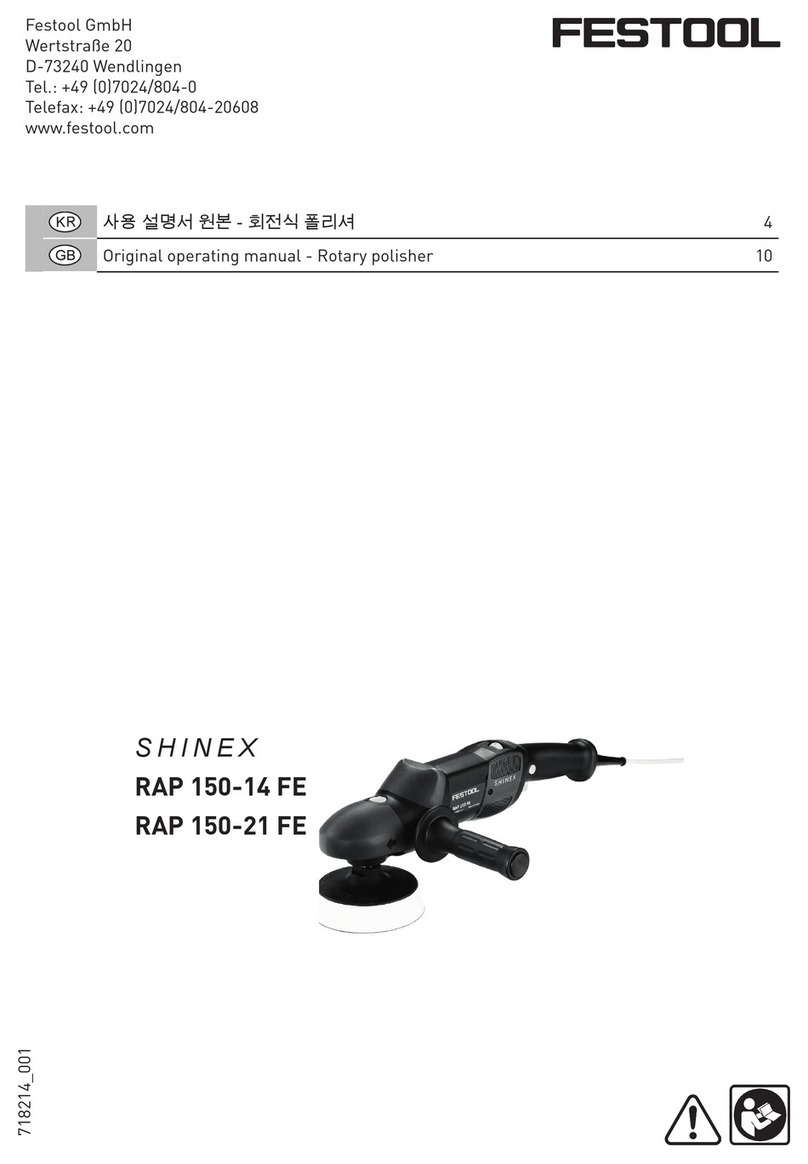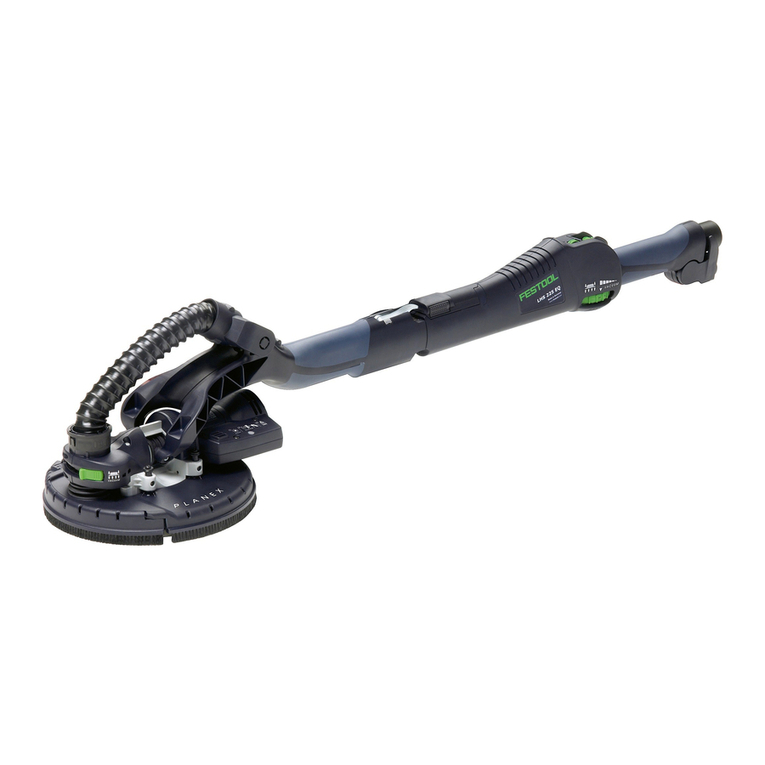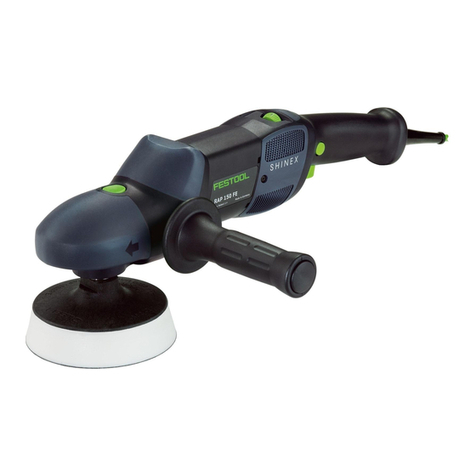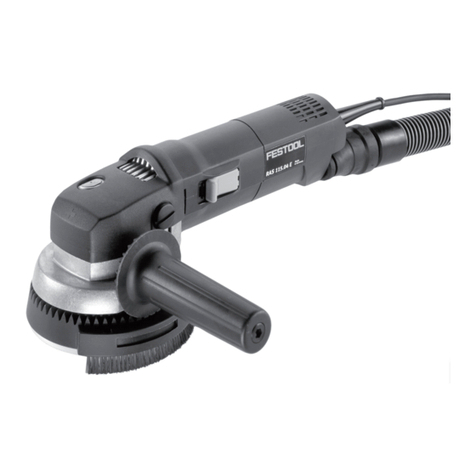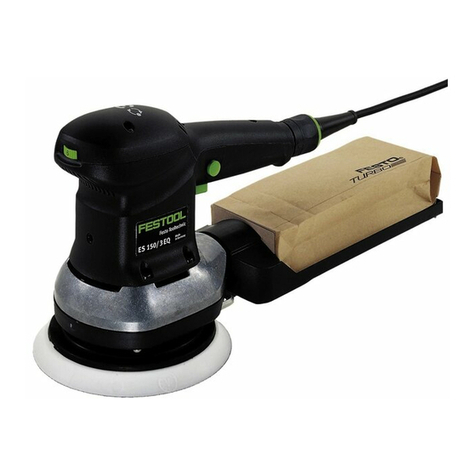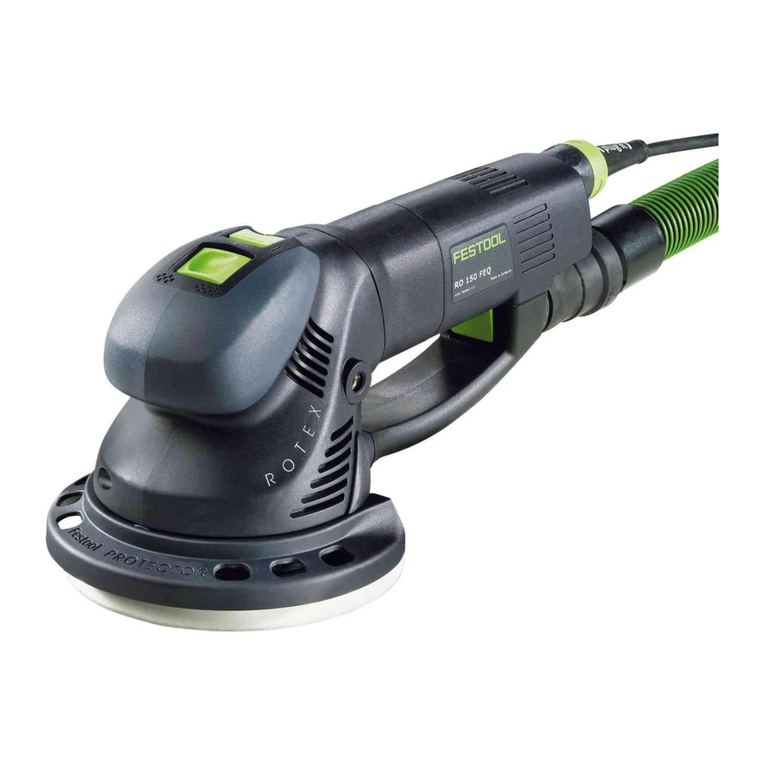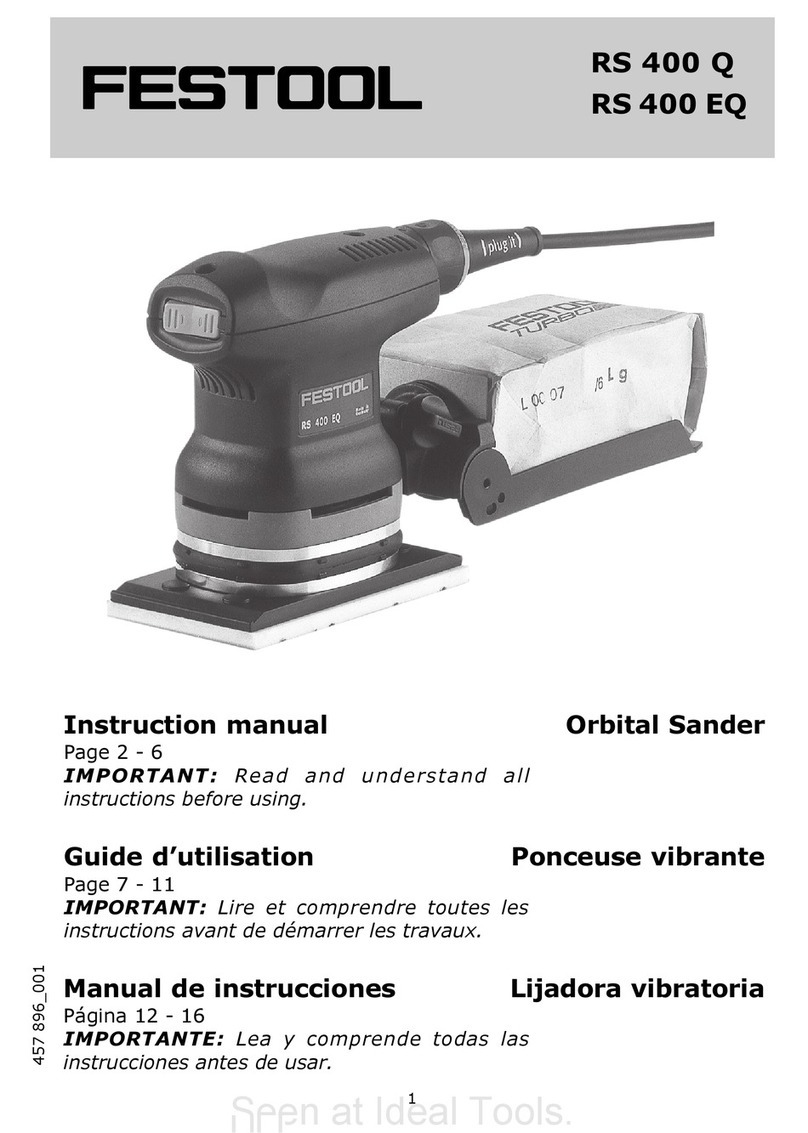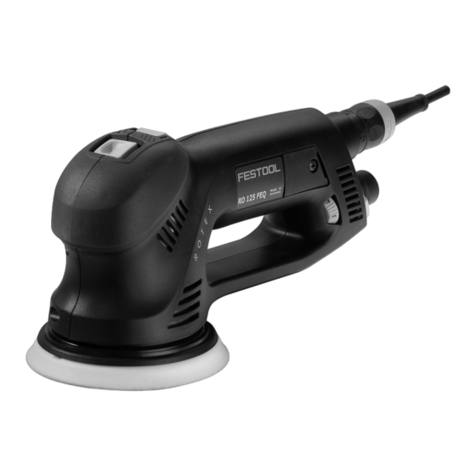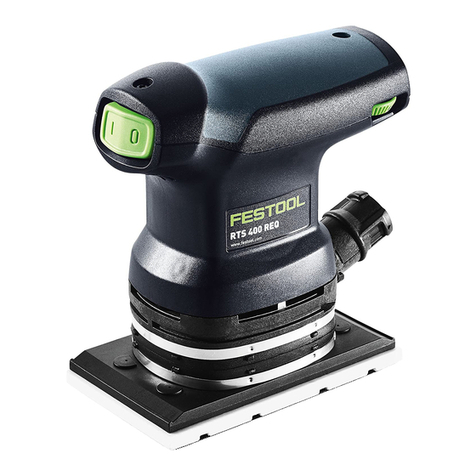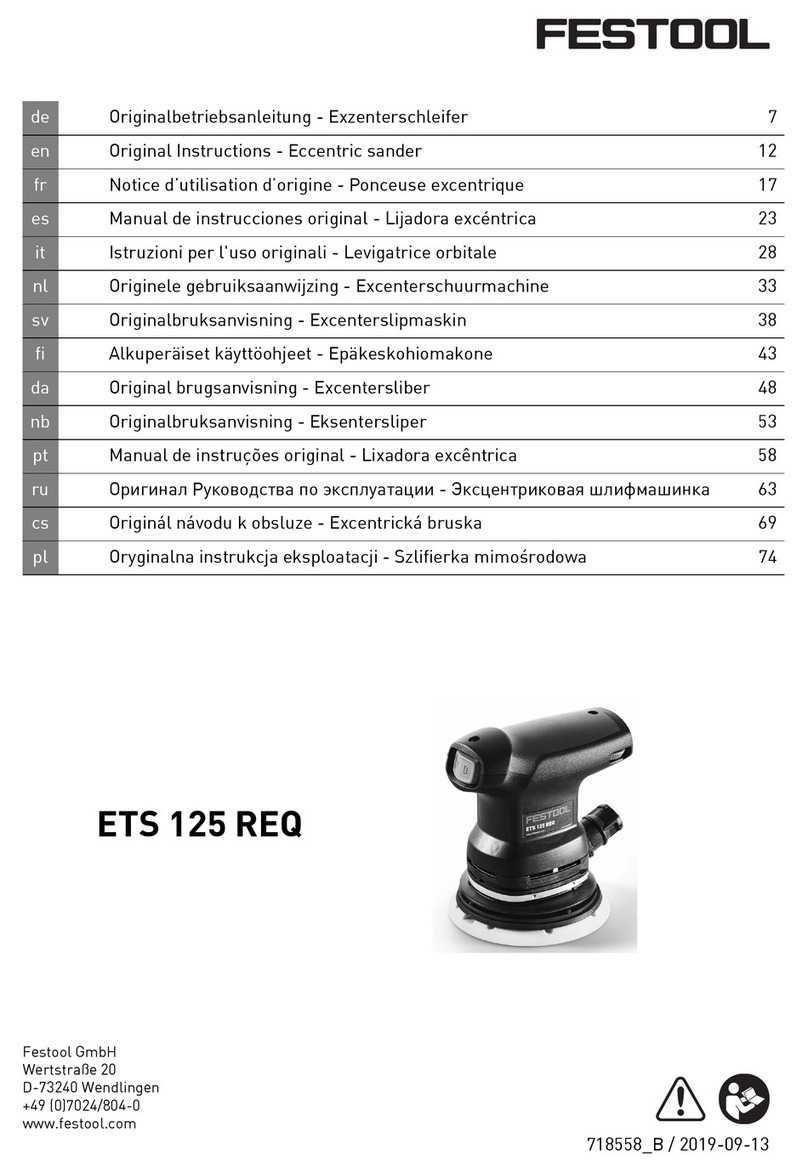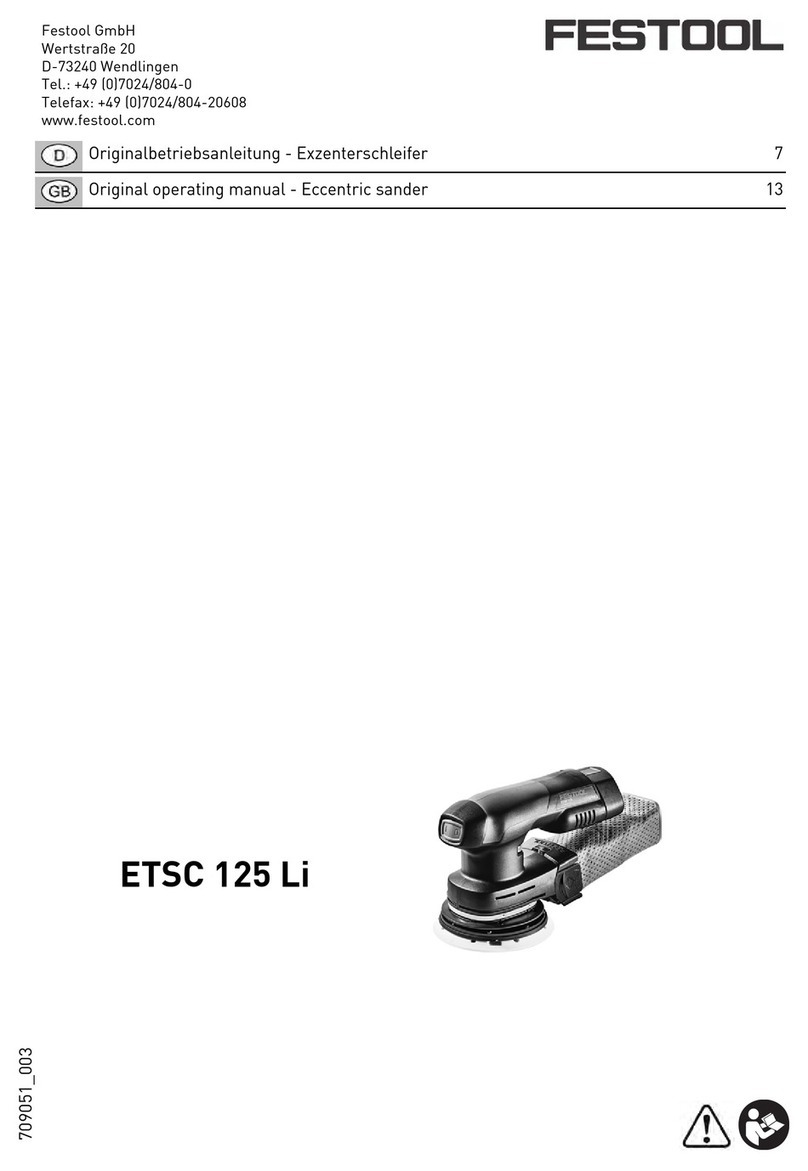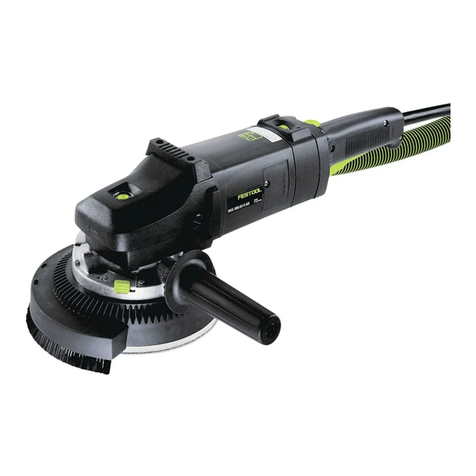
10
RO 150
Gear-drive eccentric sander
Technical data RO 150 FEQ/RO 150 FE
Power 720 W
Speed 3300 - 6800 min-1
Sanding stroke 5 mm
Weight (excluding cable) 2.3 kg
Degree of protection /II
The specified illustrations can be found at the
beginning of the operating instructions.
Graphical symbols
Caution. Danger!
Read the operating instructions/notes
Wear ear protection!
Wear protective goggles!
Wear a protective mask!
Disconnect from the power supply!
Do not throw in the household waste!
Protection class II
1 Intended use
As specified, the machines are designed for sand-
ing and polishing wood, plastic, metal, composite
materials, paint/varnish, filler and similar mate-
rials.
Materials containing asbestos must not be pro-
cessed.
For reasons of electrical safety the machine must
not be damp nor operated in a humid environment.
The machine may only be used for dry sanding.
The user is liable for damage and injury
resulting from incorrect usage!
2 Before starting up, please observe the
following
2.1 General safety instructions for power
tools
WARNING Read all safety instruc-
tions, other instructions and technical data
provided with this power tool, and take a look at
the illustrations. Failure to observe the following
instructions may lead to electric shocks, fires and/
or serious injuries.
Keep all safety and other instructions in a safe
place for future reference.
The term “power tool” used in the safety instruc-
tions refers to mains-powered power tools (with
power cable) and battery-powered power tools
(without power cable).
1 OCCUPATIONAL SAFETY
a. Keep your working area clean and well-lit. Un-
tidy, unlit working areas may lead to accidents.
b. Do not operate the power tool in a potentially
explosive environment containing flammable
fluids, gases or dust. Power tools generate
sparks that may ignite dust or vapours.
c. Keep children and other persons away from
the power tool during use. If you are distracted,
you may lose control of the tool.
d. Never leave the power tool unattended. Only
leave the power tool when the insertion tool has
come to a complete halt.
2 ELECTRICAL SAFETY
a. The connector plug on the power tool must fit
in the socket. The plug must not be modified
in any way. Do not use adapter plugs together
with earthed power tools. Unmodified plugs
and compatible sockets reduce the risk of
electric shock.
b. Avoid physical contact with earthed surfaces
such as those on pipes, heaters, cookers and
refrigerators. If your body is earthed, there is
an increased risk posed by electric shock.
c. Keep power tools away from rain and mois-
ture. The ingress of water into a power tool
increases the risk of electric shock.
d. Do not use the connection cable for other pur-
poses, such as to carry or hang up the power
tool, or to pull the plug out of the socket. Keep
the connection cable away from heat, oil, sharp
edges and moving parts of the tool. Damaged
or tangled cables increase the risk of electric
shock.
e. If working with a power tool outdoors, only use
extension cables suitable for outdoor areas.
The use of an extension cable suitable for out-
door areas reduces the risk of electric shock.
f. If operation of the power tool in a damp envi-
ronment cannot be avoided, use a residual-
current circuit breaker. Using a residual-cur-
rent circuit breaker reduces the risk of electric
shock.
